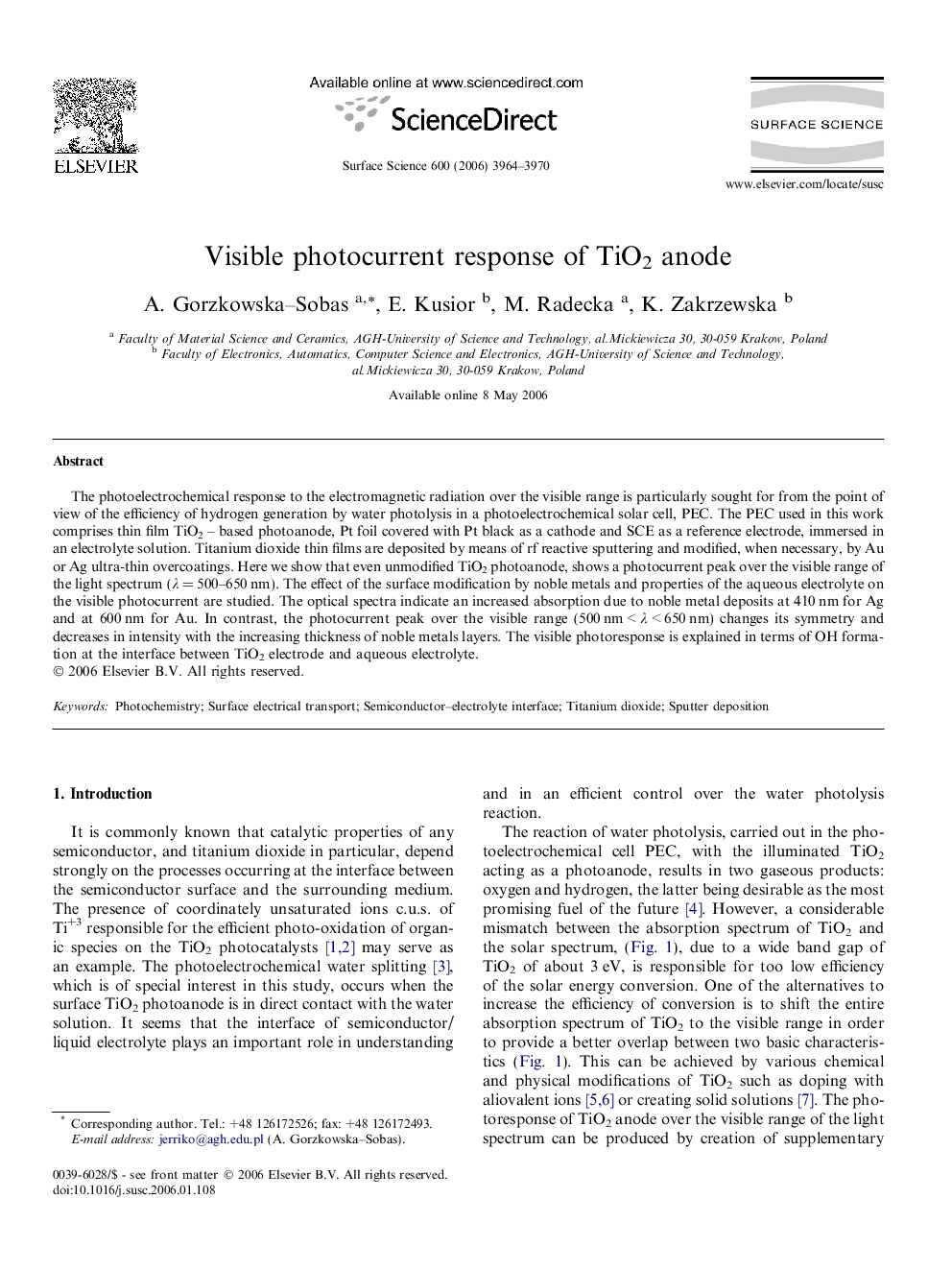| کد مقاله | کد نشریه | سال انتشار | مقاله انگلیسی | نسخه تمام متن |
|---|---|---|---|---|
| 5426461 | 1395889 | 2006 | 7 صفحه PDF | دانلود رایگان |

The photoelectrochemical response to the electromagnetic radiation over the visible range is particularly sought for from the point of view of the efficiency of hydrogen generation by water photolysis in a photoelectrochemical solar cell, PEC. The PEC used in this work comprises thin film TiO2 - based photoanode, Pt foil covered with Pt black as a cathode and SCE as a reference electrode, immersed in an electrolyte solution. Titanium dioxide thin films are deposited by means of rf reactive sputtering and modified, when necessary, by Au or Ag ultra-thin overcoatings. Here we show that even unmodified TiO2 photoanode, shows a photocurrent peak over the visible range of the light spectrum (λ = 500-650 nm). The effect of the surface modification by noble metals and properties of the aqueous electrolyte on the visible photocurrent are studied. The optical spectra indicate an increased absorption due to noble metal deposits at 410 nm for Ag and at 600 nm for Au. In contrast, the photocurrent peak over the visible range (500 nm < λ < 650 nm) changes its symmetry and decreases in intensity with the increasing thickness of noble metals layers. The visible photoresponse is explained in terms of OH formation at the interface between TiO2 electrode and aqueous electrolyte.
Journal: Surface Science - Volume 600, Issue 18, 15 September 2006, Pages 3964-3970